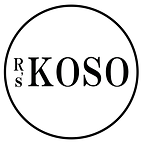Probiotics, Prebiotics, Postbiotics foods you should be eating in 2023
2023 is the year of good health and vitality. And with that comes an emphasis on good gut health.
Did you know we are made up of more microorganisms than cells that make us human? That means you are an ecosystem hosting these bacteria that outnumber your human cells 10:1.
It’s important to know how to look after them by understanding the difference (and importance) between probiotics, prebiotics, and postbiotics. In this blog, you will not only learn what they are and why you need them but also our favorite foods to ensure you are getting your probiotics, prebiotics, and postbiotics daily.
PROBIOTICS
In short, probiotics are the live bacteria and yeasts that are good for you! They help maintain good gastrointestinal health which helps maintain a strong immune system and positive mood too. Different kinds of bacterial strains make up the probiotics family and by diversifying the fermented foods you eat, you can ensure you’re getting many in.
Our favorite sources of probiotics include kimchi, yogurt, sauerkraut, sourdough, tempeh, and miso. These are all easy add-ins to your favorite dish whether it’s a yogurt dressing, a bit of kimchi or sauerkraut on the side, or a cup of miso soup before your main meal or as a snack.
If you’re opting for yogurt make sure to choose one of high quality, preferably organic and local without any added sugar.
R’s KOSO is also part of our top choice when it comes to probiotics but we’ll get into that a little bit later.
In addition to good bacteria, you also have bad bacteria living in your gut so it’s important to keep the number of good bacteria balanced by adding probiotics.
PREBIOTICS
These are what fuel and feed the bacteria and help them do what they need to do. Remember, humans, are the hosts to these bacteria that live in our ecosystem so it’s important to be a good host by feeding them with good fiber! A lack of prebiotics means a decrease in the diversity of probiotic bacteria as there is no fiber to provide them.
Prebiotic fiber can be found in fruits and vegetables and grains. Our favorites are organic oats, apples, bananas, onions, and asparagus. These tend to always be easy to find.
POSTBIOTICS
Are the resulting bioactive compounds produced after your good gut bacteria ferment the fiber? In other words, when the probiotics eat the prebiotics it produces postbiotics! Examples of postbiotics include butyrate and acetate which are two short-chain fatty acids. Having enough postbiotics is imperative for energy, immunity, metabolism, and lowering inflammation in both the gut and the brain.
As postbiotics are the result of probiotic fermentation, our list of probiotic foods still applies here. This is also where R’s KOSO can come in. R’s KOSO is made up of 100 varieties of fermented fruits, vegetables, and seaweed. Not only does it contain prebiotic ingredients from dandelion greens, asparagus, apples, burdock, and seaweeds, but it also contains probiotics including Lactobacillus brevis, Lactobacillus plantarum, Lactobacillus casei, Lactococcus lactis, etc. The result? Postbiotics in the form of 17+ amino acids, short-chain fatty acids, acetic acid, and polyphenols. Talk about an all-in-one! R’s KOSO is your one-stop shop for prebiotics, probiotics, and postbiotics all in 1 bottle.
Let’s all have a healthy and strong 2023 by including these foods in our everyday diets!
Lana Maile — Certified Integrative Nutrition Coach
Elevate your life and reclaim your health & wealth.
Website: lanamaile.com
Instagram: www.instagram.com/itslanamaile
